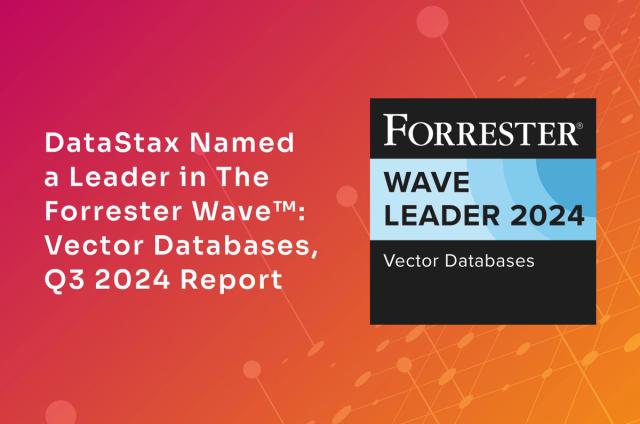Data-driven Enterprises, Now and in the Future

Sign up today for Accelerate: A NoSQL Original Series to get access to Chet's Kapoor's talk.
Many of today’s leading enterprises began their digital transformation journeys 10 or more years ago. Since then, they’ve found out that digital transformation isn’t so much a project or initiative as it is a continuous state of being.
The next stage of digital transformation is becoming a data-driven enterprise, according to DataStax CEO Chet Kapoor (@ChetKapoor), who kicked off Accelerate: A NoSQL Original Series, on Tuesday, May 12.
What is a data-driven enterprise?
Data-driven enterprises are organizations that use data to create innovative new business models—and those that have data baked into their cultures. These organizations are passionate about data, and they’re always trying to deliver new value propositions to their customers by finding new ways to put their data to use.
Netflix, for example, originally emerged as an on-demand delivery platform for content. The company then transitioned to a discovery platform where users could find new content. After that, they became a recommendation platform, serving up suggestions to users based on what their algorithms think each individual user might like.
Their transformation continues to this day: Netflix is currently leveraging its data to transform into a content machine, creating shows and movies that the data tells them their users will like.
How do you become a data-driven enterprise?
Transforming into a data-driven enterprise starts with weighing business and technology challenges and opportunities, according to Chet.
On the business side of the equation, there are three components to keep in mind.
1. Strategy
Collecting data is one thing. Collecting data for an explicit purpose is quite another. At the data-driven enterprise, the strategy is as clear as possible for every individual. Employees know what data is being collected and why.
2. Ops
Everybody hates operational challenges. Yet, by and large, they come with the territory. For example, legacy processes and organizational silos are a major problem for many companies. Transforming into a data-driven operation requires a more efficient way forward.
“Every time you think about a legacy process, think about the opportunity cost of having it because it might be holding you back,” Chet says.
3. People
At the end of the day, it’s all about your people. They take your strategy and execute on it, after all. In the digital age, many organizations suffer from employees who lack certain skills. But it is their responsibility to make sure their employees develop new skills and buy into the new way of working. “People need to drive the data-driven strategy,” Chet continues.
In addition to business challenges, there are three things to consider on the technology side, especially with regard to data infrastructure and NoSQL.
1. Scale-out
Becoming a data-driven shop starts with, well, gathering a ton of data and analyzing it with speed. This is why it’s so important to think about scale from the minute you start engineering a new app. And once you start thinking about scale, you’ll have no choice but to start thinking about NoSQL. “If you don’t think about scaling out from day one, you’ll be in trouble,” Chet says.
2. Open-source
At DataStax, we believe that open source is the future. Any company that wishes to become data-driven should look to tap into the power of the open-source community, which is filled with passionate committers and tons of resources that make your job easier.
3. Cloud-native
As you transition to a data-driven organization, you need to make the right decisions. After all, you’re making a decision that’ll impact the next five or 10 years, and you don’t want to go down a path you’ll later regret.
At DataStax, we believe the future is cloud-native, and we also believe that Apache Cassandra™ and Kubernetes are the foundation of the cloud-native apps of tomorrow.
This is why we built DataStax Astra, a cloud-native hybrid database-as-a-service powered by Kubernetes and Cassandra, which we think of like peanut butter and jelly.
Astra simplifies Cassandra operation considerably, making it much easier to develop and deploy powerful data-driven applications in the cloud—and continue the journey to becoming a truly data-driven organization.




